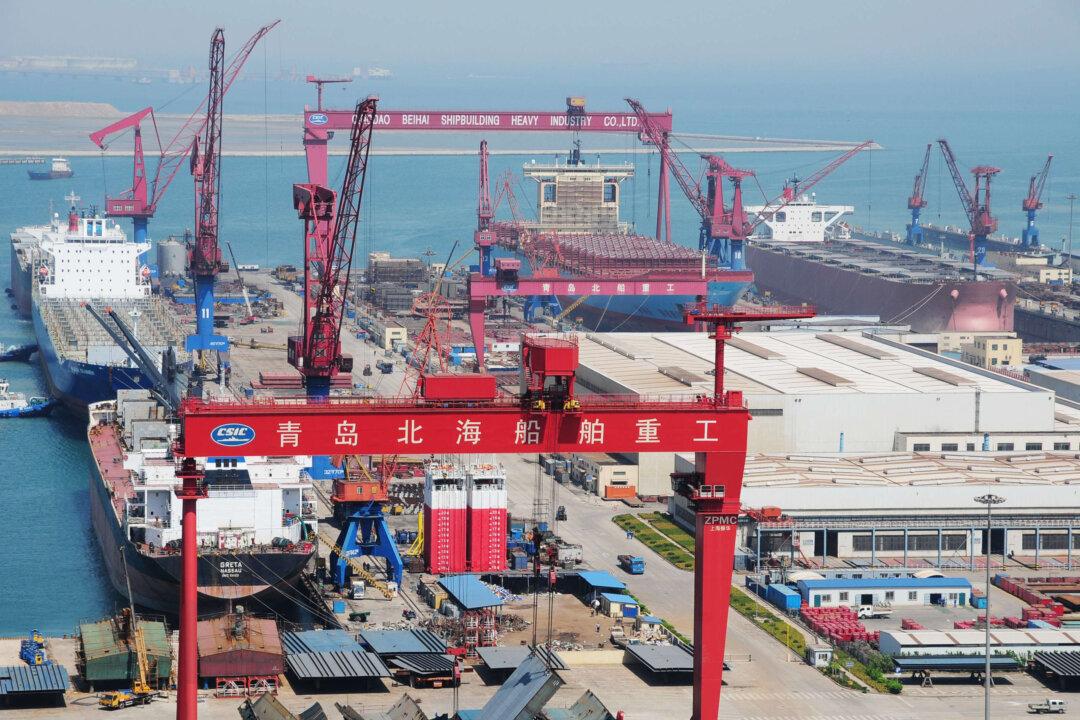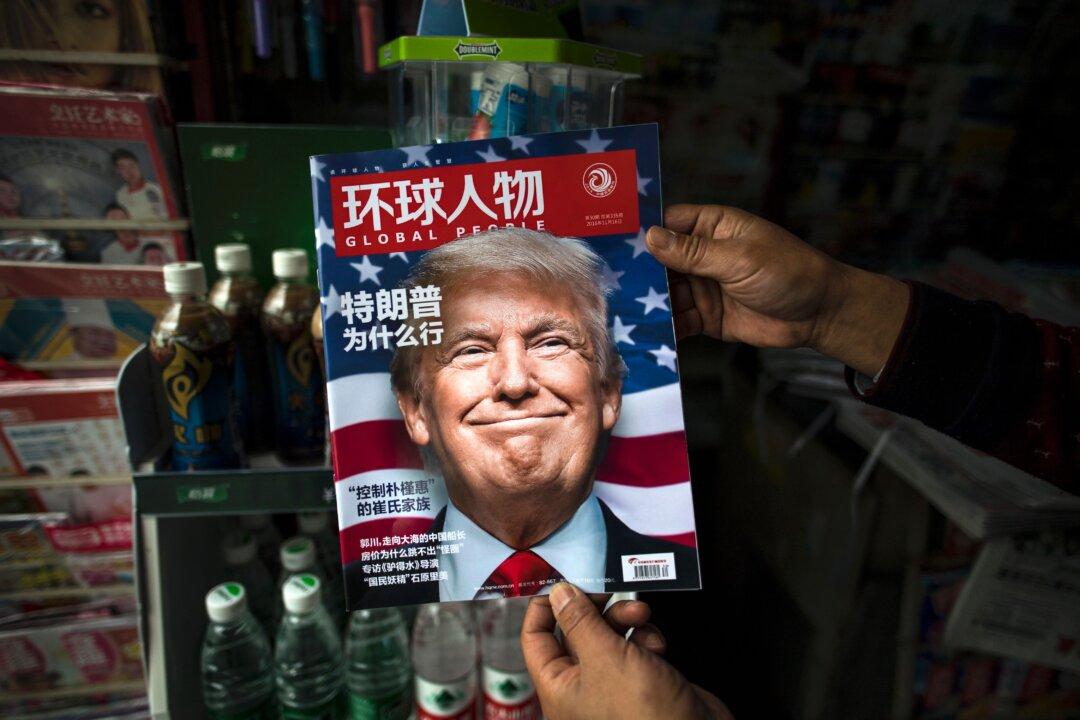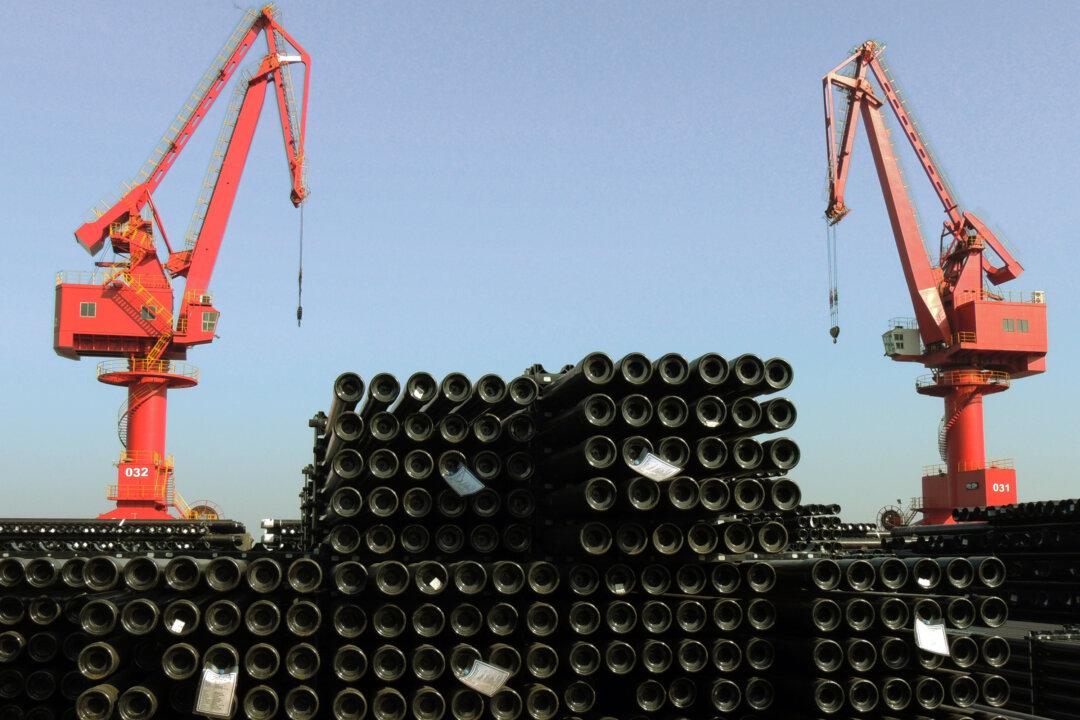Top Chinese leaders continue to emphasize the need to clean up “zombie enterprises,” large, unproductive, debt-laden, state-owned enterprises that suck up resources and drag down the economy. On Nov. 4, China’s premier Li Keqiang called for “accelerating the pace of restructuring and consolidating ‘zombie enterprises,’ or have them leave the market.” Liu He, a top Communist Party economic official, also stressed a need to “increase efforts to clear out ‘zombie enterprises’ and effectively resolve overcapacity.”
Due to various complex factors, zombie enterprises have become a disease plaguing China’s economy that is very difficult to cure.
For many years, the Chinese economy has been trapped in a vicious cycle: The greater the efforts to resolve overcapacity, the worse the problem becomes.
For example, we have been combating overcapacity in steel, cement, and aluminum for years. Not only did production in these industries not decline, but it increased. Survey data from the National Development and Reform Commission, China’s economic planning agency, indicates that in the first half of 2014, capacity utilization was less than 75 percent in 21 out of 39 industries.
Many emerging industries in China have had the tendency of rushing headlong into massive action. They rushed in because of stimulus policies and within a few years turned shortage into overcapacity.
China’s photovoltaic industry has a serious problem of excess capacity, while the wind turbine industry has excess capacity of more than 70 percent. Most industries with overcapacity problems are very unprofitable. However, with the help from banks or the government, they always find a way to hold on and thus turn out to be a source of chronic disease in China’s economy.
State-Owned Enterprises
Most of China’s zombie enterprises share the following features:
1) They are large state-owned firms. These large enterprises have many employees and play an important role in the local economy. In order to maintain stability, the government does not let these companies go bankrupt. But it is difficult to help turn them around, so they maintain the status quo through continuous money infusions from banks or the government.
2) Zombie enterprises are mostly found in industries with problems of overcapacity, such as steel, cement, and electrolytic aluminum, used to make capacitors for a wide variety of electrical applications. These industries, on the one hand create a great deal of local GDP; on the other hand, there is no need for them to exist from an economic perspective. But in order to maintain employment, local authorities won’t let them go bankrupt.
3) Most zombie enterprises are found in low-level manufacturing. They add little value but add a lot of pollution and emissions.
4) Most of them have received excessive preferential policies and loans, and are often in heavy debt. For example, total liabilities in the steel industry exceeded 3 trillion yuan in August 2014. Eighteen publicly listed steel enterprises had debt ratios exceeding 70 percent.
Corporate Debt
Once the economy starts a downturn and investment slows, the debt burden will cause a range of knock-on problems. We need to realize that these zombie enterprises are like landmines that can cause a lot of damage to China’s economy. In the present economic downturn, China’s economy has already entered into a risk cycle.
Risk factors, such as debt, are testing the stability of the economic system. Corporate debt is the No. 1 threat. Since 2012, China’s corporate debt has been above 113 percent of GDP, far higher than the international risk threshold of 90 percent.
In its October 2015 report, the IMF estimated that there is up to $3 trillion in debt accumulated by companies and banks in emerging market countries, with China at the top of the list.
Soaring bad bank loans and corporate debt defaults are related to the current economic cycle. It is also the result of too many zombie enterprises soaking up credit.
Credit Crunch
The many zombie enterprises have also caused a serious issue of mismatched resources.
Take another look at credit resources. Since the financial crisis, China issued a large amount of credit to resolve financing difficulties of small and medium-sized enterprises (SMEs). China’s M2 money supply, a measure of money that includes savings accounts and similar deposits, is close to 135 trillion yuan. But it is more and more difficult now for many SMEs to obtain bank loans.
China’s corporate financing cost is far higher than Europe’s and America’s because a large number of zombie enterprises are hoarding credit. This result is a vicious cycle: The more credit is issued, the tighter the liquidity and the more expensive the financing.
With the government trying to sustain inefficient zombie enterprises, competitiveness breaks down. Enterprises take advantage of the government’s obsession with GDP and abuse policies to benefit themselves. Hence China’s economy pursues low-end manufacturing and quick returns. This has created huge obstacles to upgrading the economy.
Zombie enterprises must be dealt with; it is the key to optimizing China’s resource allocation, and to realize a true upgrade on the supply-side of the economy. If the government is determined to get rid of the interference from local governments and allows zombie enterprises to be eliminated by the market, then entrepreneurialism and competitiveness will take root. The distorted phenomenon of Chinese enterprises rushing into low-end industries in the global industrial chain will naturally go away. And the hidden risk to banks will also be greatly reduced.
This is a translation of Ma Guangyuan’s Chinese article posted to his public WeChat account on Nov. 30, 2015. Ma Guangyuan is a well-known independent economist in China. Ma appears as a financial commentator on China Central Television, and his columns have been published in Financial Times Chinese, Southern Weekly, and elsewhere.




